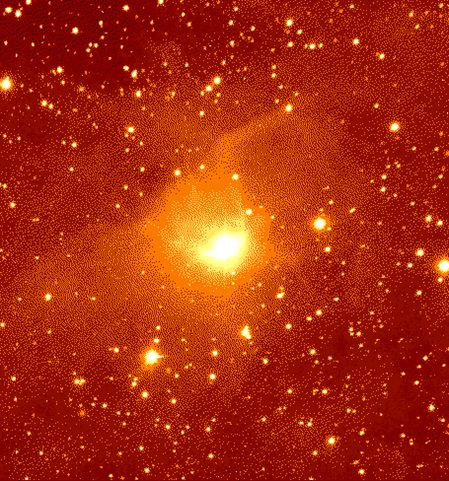When we consider samples from the solar nebula, we think about comets and meteorites. These materials come from our solar system’s beginning, but the clues they give to formation don’t always mesh neatly. Thanks to a new study done by Carnegie’s Alan Boss, we’re now able to take a look at the Sun’s formation through a set of theoretical models. This work could not only help explain some of the differences we’ve discovered, but could also point to habitable exoplanets.
At the present time, a way to look back at the solar system’s early period is to theorize about tiny pockets of crystalline particles found in comets. These particles were forged at high temperatures. An alternate method of studying solar system formation is to analyze isotopes. These variants of elements carry the exact same number of protons, but contain a different number of neutrons. Unlike the crystalline particles, we can get our hands on samples of isotopes, because they are found in meteorites. As they decay, they turn into different elements. However, the initial number of isotopes can clue researchers as to their origin and how they might have journeyed across the neophyte solar system.
“Stars are surrounded by disks of rotating gas during the early stages of their lives.” says the Carnegie team. “Observations of young stars that still have these gas disks demonstrate that Sun-like stars undergo periodic bursts, lasting about 100 years each, during which mass is transferred from the disk to the young star.”
However, the study isn’t cut and dried just yet. The study of both particles and isotopes from comets and meteorites still present a somewhat confused look at early solar system formation. It would appear there’s more to the picture than just a single path of matter from the protoplanetary disk to the parent star. The crystalline grains found in comets are heat-formed and they signal that considerable mixing and outward flow occurred from materials close to the parent star and out to the perimeter of the system itself. Certain isotopes, such as aluminum, support this theory, but others, like oxygen, defy such a neat explanation.
According to the news release, Boss’ new model shows how a period of slight gravitational instability in the gas disk surrounding a proto-Sun about to go into an outburst phase, could account for these findings. What’s more, the models also predict this could happen with a wide variety of both mass and disk sizes. It shows that instability can “cause a relatively rapid transportation of matter between the star and the gas disk, where matter is moved both inward and outward. This accounts for the presence of heat-formed crystalline particles in comets from the solar system’s outer reaches.”
So what of aluminum? According to Boss’ model, the ratios of aluminum isotopes can be explained. It would appear the original isotope was imparted during a singular event – such as an exploding star sending a shock wave both inward and outward in the protoplanetary disk. As far as oxygen goes, it can be present in different pattern because it originated from sustained chemical reactions natural to the outer solar nebula and did not just happen as a singular event.
“These results not only teach us about the formation of our own solar system, but also could aid us in the search for other stars orbited by habitable planets,” Boss said. “Understanding the mixing and transport processes that occur around Sun-like stars could give us clues about which of their surrounding planets might have conditions similar to our own.”
Original Story Source: Carnegie Institution for Science Press Release


Here’s the relevant (PDF) paper by the above mentioned science dude:
Mixing and Transport of Short-Lived and Stable Isotopes and Refractory Grains in Protoplanetary Disks.
As one tree is a result of one seed same one planet is a result of one carbonaceous meteoroid contain amino acid and organic chemistry .
An interesting article reporting a newly discovered accretion mechanism based on the attractive influence of black-body radiation is here:
http://physicsworld.com/cws/article/news/2013/jul/19/attractive-force-arises-from-black-body-radiation-say-physicists
Fascinating article! I’m a lay-planetary geologist fan-boy (among other disciplines) and I ate this information up! Thanks!